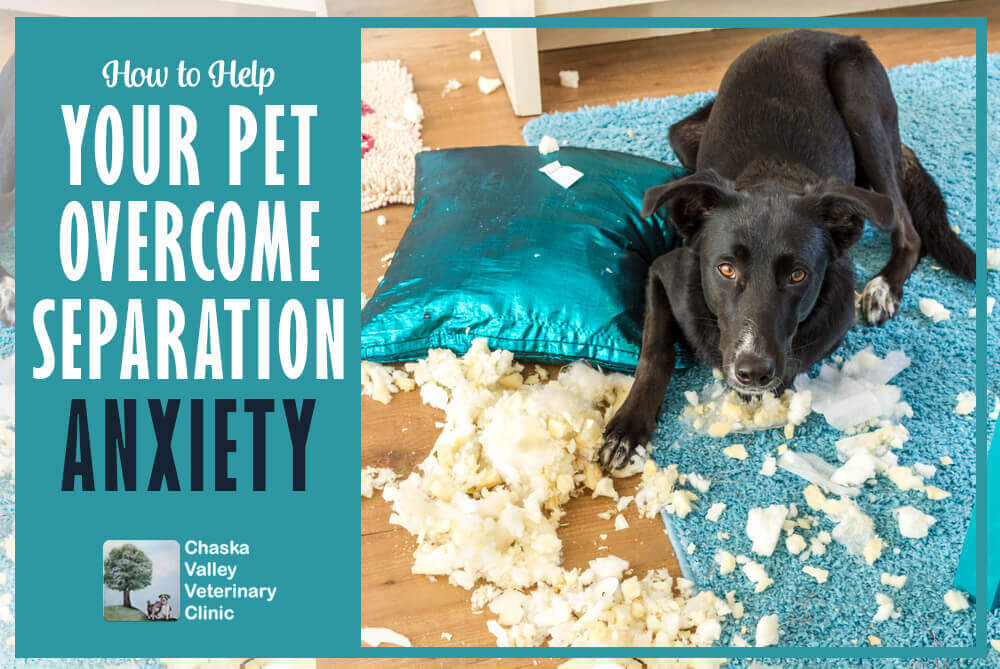
Both dogs and cats can develop separation anxiety, although they express it in different ways. It can also happen to a pet who has never displayed signs of it in the past. With summer winding down and kids across Minnesota soon heading back to school, don’t be surprised if your pet seems anxious with the changes in schedule. The following are the most common types of behavior associated with separation anxiety:
- Potty accidents in the house
- Nervous pacing
- Destructive chewing
- Loud vocalizations by cats
- Howling by dogs
- Refusal to eat or reduced appetite
- Trying to escape to go after you or your children, which is why having a microchip is so important
- Excessive grooming by cats to the point of bald spots on the fur
- More hiding behavior by cats
- Increased aggression by dogs
- Create a Good-bye Ritual
As people leave the house in the morning, someone still left at home should spend a few minutes giving the dog or cat undivided attention. This will help to keep his mind off the front door. Providing a Kong toy filled with a treat can keep dogs busy for several minutes. Cats might enjoy chasing around a toy mouse filled with catnip.
If you’re the last person to leave the house, calmly say good-bye to your pet without transferring any of your own anxiety. If you’re concerned about destructive behavior, you may want to put your dog in a kennel or your cat in a closed room in the house. Just make sure he has enough food and water to last until someone gets home.
Make Your Pet’s Environment as Stimulating as Possible
A stimulating environment can help curb anxious behaviors, even if you must leave your dog in her kennel while you’re away. Be sure to rotate her toys frequently to give her something new to do each day. Cats do best when they have opportunities to curl up and hide, look out the window, and have toys that cater to their hunting instinct.
Leaving the radio turned to soft, low music can help create a more calming atmosphere while your pet is home alone. Giving your dog or cat something he can smell that has your scent on it can reduce anxiety as well. Animals have a sense of smell at least 10 times that of humans, which means that detecting your aroma can be a great comfort. Just make sure the item you give your pet is something you don’t mind having chewed or licked.
Assure Your Pet That She’s an Important Part of the Family
Your pet needs to know that she belongs in your family and that no one has forgotten about her. This is especially true during times of transition such as kids going back to school, a new schedule at work, or a recent move. It can go a long way to help her feel less anxious when each family member gives the pet several minutes of undivided attention each day. Including your pet in family activities when possible can also help her feel more secure.
Reach Out for Help if the Anxiety Persists
Please schedule a check-up at Chaska Valley Veterinary Clinic if your pet’s separation anxiety does not improve after trying these suggestions or even gets worse. Our veterinarians will make sure that it’s not caused by an underlying health issue. We can also recommend additional behavioral techniques or prescribe anti-anxiety medication if necessary.
Photo Credit: MichalRenee / Getty Images


